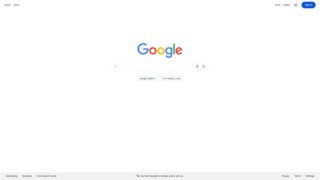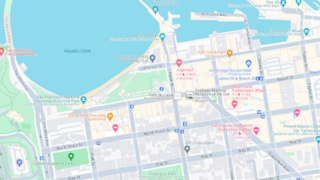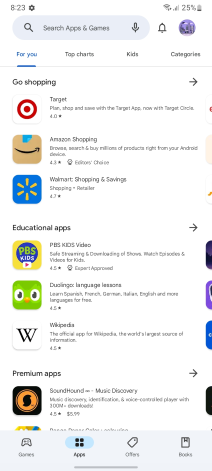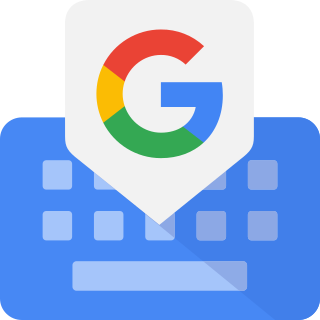
Google Search is a search engine operated by Google. It allows users to search for information on the Internet by entering keywords or phrases. Google Search uses algorithms to analyze and rank websites based on their relevance to the search query. It is the most popular search engine worldwide.

Gmail is an email service provided by Google. As of 2019, it had 1.5 billion active users worldwide, making it the largest email service in the world. It also provides a webmail interface, accessible through a web browser, and is also accessible through the official mobile application. Google also supports the use of third-party email clients via the POP and IMAP protocols.

Google Maps is a web mapping platform and consumer application offered by Google. It offers satellite imagery, aerial photography, street maps, 360° interactive panoramic views of streets, real-time traffic conditions, and route planning for traveling by foot, car, bike, air and public transportation. As of 2020, Google Maps was being used by over one billion people every month around the world.

Google Translate is a multilingual neural machine translation service developed by Google to translate text, documents and websites from one language into another. It offers a website interface, a mobile app for Android and iOS, as well as an API that helps developers build browser extensions and software applications. As of 2022, Google Translate supports 133 languages at various levels; it claimed over 500 million total users as of April 2016, with more than 100 billion words translated daily, after the company stated in May 2013 that it served over 200 million people daily.

Crowdsourcing involves a large group of dispersed participants contributing or producing goods or services—including ideas, votes, micro-tasks, and finances—for payment or as volunteers. Contemporary crowdsourcing often involves digital platforms to attract and divide work between participants to achieve a cumulative result. Crowdsourcing is not limited to online activity, however, and there are various historical examples of crowdsourcing. The word crowdsourcing is a portmanteau of "crowd" and "outsourcing". In contrast to outsourcing, crowdsourcing usually involves less specific and more public groups of participants.
A human-based computation game or game with a purpose (GWAP) is a human-based computation technique of outsourcing steps within a computational process to humans in an entertaining way (gamification).
Google Drive is a file storage and synchronization service developed by Google. Launched on April 24, 2012, Google Drive allows users to store files in the cloud, synchronize files across devices, and share files. In addition to a web interface, Google Drive offers apps with offline capabilities for Windows and macOS computers, and Android and iOS smartphones and tablets. Google Drive encompasses Google Docs, Google Sheets, and Google Slides, which are a part of the Google Docs Editors office suite that permits collaborative editing of documents, spreadsheets, presentations, drawings, forms, and more. Files created and edited through the Google Docs suite are saved in Google Drive.

Google Play, also known as the Google Play Store or Play Store and formerly Android Market, is a digital distribution service operated and developed by Google. It serves as the official app store for certified devices running on the Android operating system and its derivatives, as well as ChromeOS, allowing users to browse and download applications developed with the Android software development kit (SDK) and published through Google. Google Play has also served as a digital media store, offering games, music, books, movies, and television programs. Content that has been purchased on Google Play Movies & TV and Google Play Books can be accessed on a web browser and through the Android and iOS apps.
Habitica, formerly HabitRPG, is an online task management application developed by HabitRPG, Inc. It was founded on January 30, 2013. The application uses the format of a role-playing game to organize tasks. Habitica is an open source project. It has attracted the interest of scientific research into the efficacy of habit-forming.

Google Sheets is a spreadsheet application included as part of the free, web-based Google Docs Editors suite offered by Google. Google Sheets is available as a web application; a mobile app for: Android, iOS, and as a desktop application on Google's ChromeOS. The app is compatible with Microsoft Excel file formats. The app allows users to create and edit files online while collaborating with other users in real-time. Edits are tracked by which user made them, along with a revision history. Where an editor is making changes is highlighted with an editor-specific color and cursor. A permissions system regulates what users can do. Updates have introduced features that use machine learning, including "Explore", which offers answers based on natural language questions in the spreadsheet. Sheets is one of the services provided by Google that also includes Google Docs, Google Slides, Google Drawings, Google Forms, Google Sites and Google Keep.

Mapillary is a service for sharing crowdsourced geotagged photos, developed by remote company Mapillary AB, based in Malmö, Sweden. Mapillary was launched in 2013 and acquired by Meta Platforms in 2020. It offers street level imagery similar to Google Street View.
Influenster is a product discovery and reviews platform for consumers. Influenster uses social media analytics to measure its users’ influence on social media. Influenster launched in 2010. An iOS app for Influenster launched in 2014 while an Android app launched in 2015. As of January 2018, Influenster's community consisted of more than 4 million users. Influenster was acquired by Bazaarvoice in 2019, and the app was relaunched in October 2022.

Gboard is a virtual keyboard app developed by Google for Android and iOS devices. It was first released on iOS in May 2016, followed by a release on Android in December 2016, debuting as a major update to the already-established Google Keyboard app on Android.

The Google Assistant is a virtual assistant software application developed by Google that is primarily available on mobile and home automation devices. Based on artificial intelligence, The Google Assistant can engage in two-way conversations, unlike the company's previous virtual assistant, Google Now.

Google Allo was an instant messaging mobile app by Google for the Android and iOS mobile operating systems, with a web client available in some web browsers. It closed on March 12, 2019.

Google Opinion Rewards is a rewards-based program developed by Google. It was initially launched as a survey mobile app for Android and iOS developed by Google. The app allows users to answer surveys and earn rewards. On Android, users earn Google Play credits which can be redeemed by buying paid apps from Google Play. On iOS, users are paid via PayPal. Users in the available countries who are over 18 years old are eligible. Google Opinion Rewards works with Google Surveys, market researchers make the survey through Google Surveys and answers are received through Google Opinion Rewards by app users. This process provides surveyors with a large pool of surveyees quickly. This "fast and easy" surveying process has been criticized due to contention over the validity of results as well as concern over the privacy and security of the app users' data.
Toloka is a crowdsourcing platform and microtasking project launched by Yandex in 2014 to quickly markup large amounts of data, which are then used for machine learning and improving search algorithms. The proposed tasks are usually simple and do not require any special training from the performer. Most of the tasks are designed to improve algorithms that are used by modern technologies spanning self-driving vehicles, smart web searches, advanced voice assistants and e-commerce. Upon completion of each task the performer receives a reward based on the volume of images, videos, and unstructured text. The service has two app versions – for Android and iOS.












